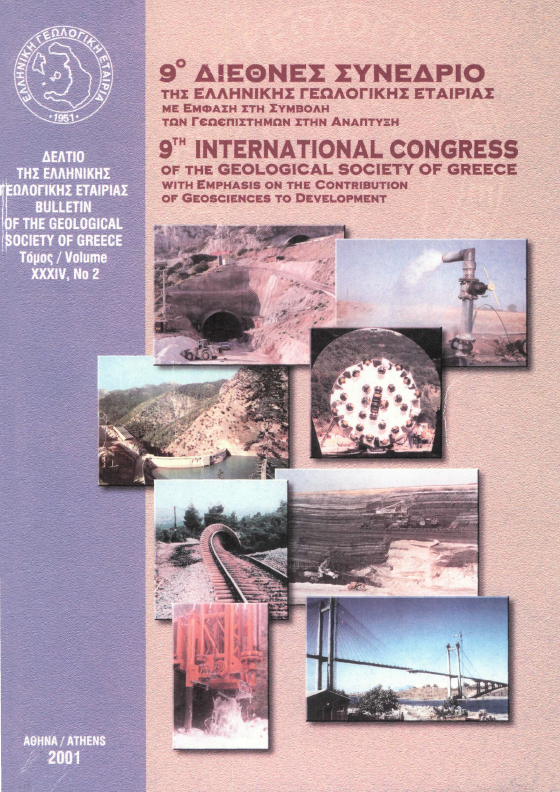SELECTING PEDAGOGICAL GEOTOPES IN URBAN ENVIRONMENT
Abstract
Landscape is our modern environment and the rocks that constituting are simultaneous the materials from which are made our cities. May be, some students have seen these geological outcrops, but what are they knowing about the way that they have formed, the way that they act on humans and the way that humans act on them? It is very important the selection of urban pedagogical geotopes because their study will contribute in the understanding of the local geological history, and they will help each student separately to develop useful skills and also they will sensitize the general public. There are three cities types or three sections in the cities that they can coexist in a city or it can appear one or a combination of two (Tab. 1). In type 1, exist impressive or simply obvious natural geological resources. In type 2, the appearance of geological natural resources is very limited, but exists. In these two types of cities, we are looking for "typical geotopes" and there is the opportunity to promote the geological natural resource in the urban environment and indicate his relation with historical, social and cultural development of city. In type 3, does not exist the least appearance of geological resources. In this category belong usually the centres of big cities and the probability to find typical geotopes is minimal. In this type, if we want to promote the idea of geological heritage we should "create" a geological resource that means a "non typical geotope". In these cases the built environment - buildings, statues, monuments (Tab. 5), even cemeteries, streets mainly pedestrian zones Tab. 6), pavements and other constructions which their materials (Tab. 7) (rocks and constructions materials) are emanating from geological natural resources – can constitute a "not typical geotope". Educationally these "non typical geotopes" offer a great challenge to discover the local geological history. As a "non typical geotope" in Athens is proposed the "appearance" of Iridanos river in the METRO Station Monastiraki (Tab. 8).
Article Details
- How to Cite
-
Φέρμελη Γ., & Μαρκοπούλου-Διακαντώνη Α. (2018). SELECTING PEDAGOGICAL GEOTOPES IN URBAN ENVIRONMENT. Bulletin of the Geological Society of Greece, 36(2), 649–658. https://doi.org/10.12681/bgsg.16770
- Section
- Geosciences in Education and Geosites

This work is licensed under a Creative Commons Attribution-NonCommercial 4.0 International License.
Authors who publish with this journal agree to the following terms:
Authors retain copyright and grant the journal right of first publication with the work simultaneously licensed under a Creative Commons Attribution Non-Commercial License that allows others to share the work with an acknowledgement of the work's authorship and initial publication in this journal.
Authors are able to enter into separate, additional contractual arrangements for the non-exclusive distribution of the journal's published version of the work (e.g. post it to an institutional repository or publish it in a book), with an acknowledgement of its initial publication in this journal. Authors are permitted and encouraged to post their work online (preferably in institutional repositories or on their website) prior to and during the submission process, as it can lead to productive exchanges, as well as earlier and greater citation of published work.




